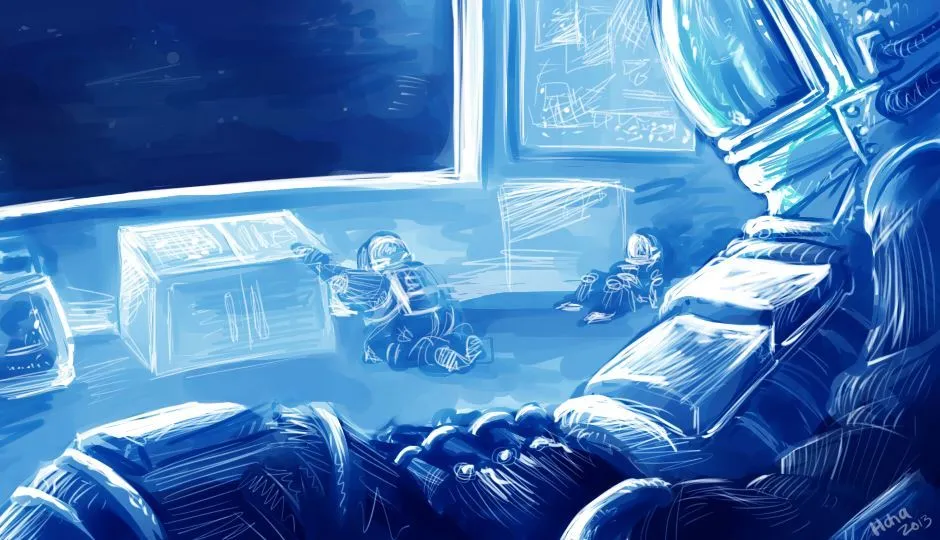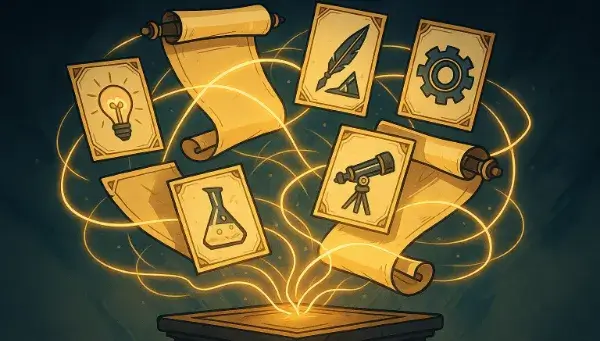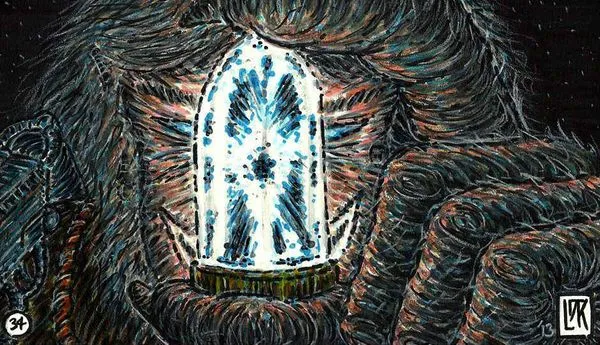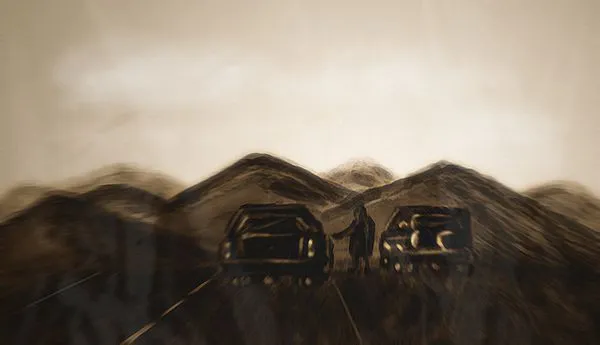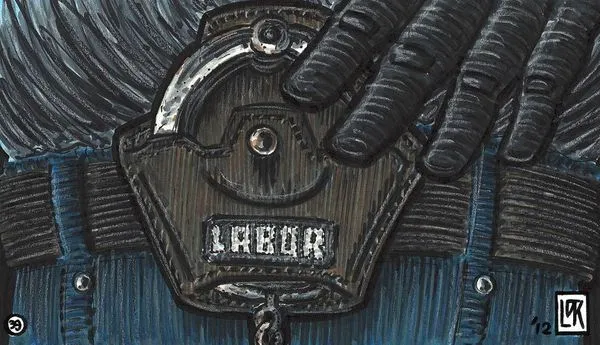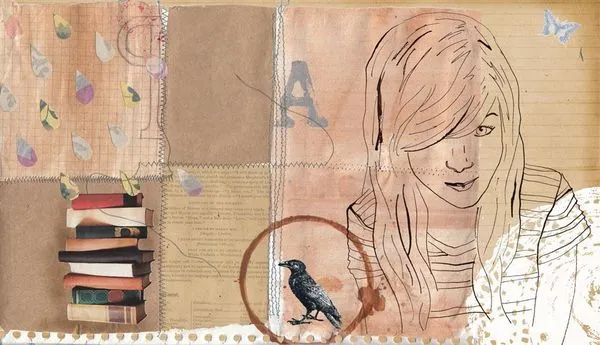The Mopsos XIII
Published on 2013-08-05
I’d always imagined Pluto as blue, but as the Mopsos XIII came in for contact it appeared to us dark, like a roughshod ball of lead.
CLANG!
Even the teeth-setting landing felt to us metallic. That was most likely all Mopsos, a sturdy hunk of metal impacting a cold, hard planetoid three-and-a-half billion miles distant from the sun.
The hatch floated open and my two crewmates and I stepped out, three bulb-headed aliens bouncing into the frozen night wastes of Pluto — the first of our kind. From here the sun appeared as little more than a bright star; our operations were lit by the bleak lamps housed in the exterior of the Mopsos. Captain Pederson pressed a button in his suit and a large central section of the ship unfolded on hydraulics, neatly laying out all that was necessary for the construction. Then Corporal Baumann took magnetic bearings and, using her divot tool, marked out the exact spot where we were to build.
We set to, loading at first the giant base-struts onto robot trolleys, two to a strut. They ferried them to the construction site and lay them carefully on the solid surface. As we bounced back and forth with rucksacks of bolts and seals my mind went back to the problem I’d had 8 months to ponder: what was I doing here? As a theoretician it had personally been too good an opportunity to pass up, but a niggle about the motives of the ESA, ignored during training, had had plenty of opportunity to seed and grow on the outbound journey. I had my guesses, and now that we were approaching zero hour paranoia was setting in, making it hard to focus on the task at hand.
My name — Andrew Sally — was famous in the world of physics, both in respect and ridicule. For a while I had been at the forefront of Half-unified Theory — the most complete theory we have to date — and was considered then the most authoritative theoretical scientist in the world. Then I published what has become cruelly known as Sally’s Bogus Theorem, a misnomer that suggests that I was attempting to hoodwink everyone. I wasn’t.
My Bogus Theorem (I call it that too, to confound my critics), attached to general relativity, basically states that time is related to distance in a manner that is visually observable. That is, the further away from you an object is, the further in your past it is (as time is relative to each person). This is observable to any human looking into the sky at night. He sees stars millions if not billions of years in the past. According to the calculations of Bogus Theorem, if we could find a way to travel instantaneously from point A — that is with zero time passing from our perspective — to, for example, point B at a distant galaxy, then when we reached the galaxy it would be in exactly the same state as we observed it at point A — ergo, we would have travelled billions of years into the past.
The scientific community ridiculed me, poked holes in the calculations. I went away, recalculated and retracted the theorem. It went completely against a number of laws related to the speed of light, and in the end I was convinced it was impossible. After that, only my progressions in space travel theory kept me afloat in the community. Why had that community sent me here?
The sharply contrasted images of my comrades bounded towards me.
‘Are you well, Sally?’ huffed Pederson through the com in his bold, Norwegian accent.
‘I’m fine.’
‘Keep focused. Not long now.’ He tapped my shoulder — a gesture I could not feel through my suit — and leapt once more towards the pile at the ship. I pushed forward with a pneumatic wrench perched in my glove to perform my assembly function at the construction site.
It was all done in six hours. Above us loomed the fruit of our labour: a gigantic tunnel comprised of five septagonal frame sections, capped at one end with an engine-like structure, looking to all intents and purposes like a demonic machine from a steel refinery in space.
We climbed back into the Mopsos XIII, negotiated our way to the cockpit, and strapped in. Soon it would be time. Pederson guided our craft gently over the surface and into place, aft-first into the tunnel. Now it was my turn. I unlocked the heavy, metal cover from the control panel and primed the controls. The display showed robotic ballasts coming out of the tunnel housing and attaching to the ship at my command. Baumann set the mark. The timer started counting from 7 minutes down to the time we would be at the correct spatial coordinates. Silence. For all the weightlessness of Pluto, the weight of a history-defining mission on our shoulders.
5 minutes.
Baumann was flexing her hand nervously, still gloved in its suit. As we didn’t know what was about to happen we had elected to keep them on in case of irregularities, unforeseen dangers.
‘Inner peace, guys,’ counselled Pederson, uncertainly.
3 minutes.
I could sense the blood pumping and swilling around my head. In all this time in space I had never felt claustrophobic until now. My thoughts wandered over that period through the void, travelling at an average of 625,000 mph; all the banal, civil relations with my crewmates. Things would be moving much faster soon, if you could call it moving.
Suddenly it was there before me: 5… 4… 3… I unlocked the safety with a turn of a knob and pressed the button for Green Light. The ship did the rest.
Nothing. Then, an increase in light, a sense of searing heat around the ears, space dropped away into a kaleidoscope-coloured surreality, a sickening lurch as though being thrown down a canyon from the window of a high speed train, and the next second really nothing.
I awoke to find myself sprawled in the hollow underneath the main control panel, blowing bubbles in a pool of my own vomit, which had collected at the bottom of my visor.
I looked weakly across the cockpit. Baumann was sat foetally up against the wall, helmet off, her hair drenched with the contents of her stomach, her broad, Germanic face deathly ashen, looking down and seeing nothing.
Pederson had somehow ended up at the far end of the room. He was lying prone on his back. He wasn’t moving.
Worried that he may have choked on puke, I crawled towards him and released his visor. He had vomited, but beads of sweat and deep panting assured me that he lived.
The next day we were able to check our position.
‘I don’t understand,’ said Baumann, ‘32533 X-T1 should have compacted into a regular spiral galaxy by now, did we come the wrong way?’
‘That’s 32533 X-T1,’ I replied. ‘Look.’
I showed her photographs taken by the Solar Scope probe from our system, pointing out manifold correlations. From that distance the image of the galaxy was billions of years old, and yet it hadn’t aged a day. A radiographic survey confirmed it.
‘Then you’re not so bogus after all, Dr. Sally,’ Pederson joked mirthlessly. Our instantaneous travel, which was supposed to have taken us billions of light years in distance — to the source of what appeared to be a time-and-space distorted, yet intelligent signal — had also taken us billions of years into the past, as Bogus Theorem predicted. There would be no return. We had the equipment to build a second tunnel, but the Milky Way would have been in a primordial state when we got there.
Baumann brightened suddenly. ‘But that means that we’ve not only arrived at the source of the signal, but at the time of it too! We can’t return, but maybe we can make contact!’
We had always been aware we probably weren’t coming back; this at least was an exciting step forward. ‘Send a message,’ I said.
She rushed to the communication panel. ‘This is Stefanie Baumann, speaking for the human race, we come in peace. Can anyone hear me, over?’
She repeated it a few times. Pederson stood observing, arms folded.
‘How long will the message we just sent take to get back to the Earth?’ he asked at last.
I did the mathematics quickly in my head, and then it dawned on me. I slumped down, sickened by the irony of it.
‘It’ll arrive exactly at the time Ears on the Universe picked up the alien signal originating here,’ I told them.
And we floated on without aim.

